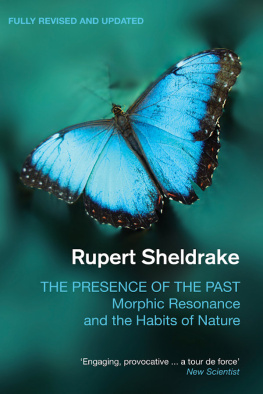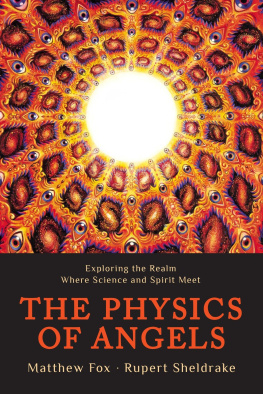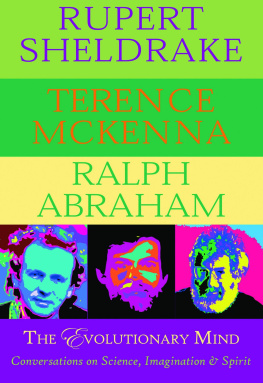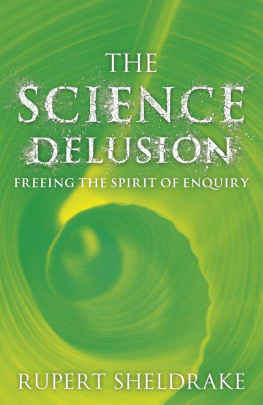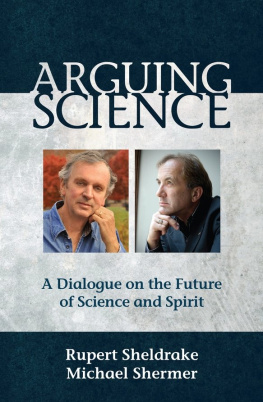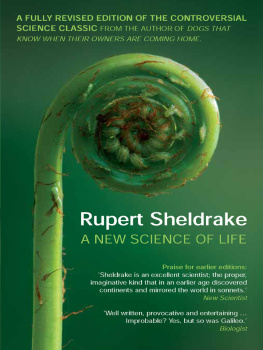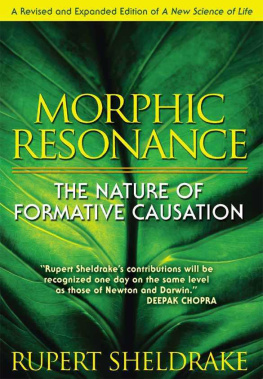
Ways To Go Beyond
And Why They Work
Rupert Sheldrake
A Salix Press Book
Contents
Rupert Sheldrake
Ways to Go Beyond and Why They Work
Seven Spiritual Practices in a Scientific Age
A Salix Press Book
Published by Penraeth LLC
Aurora, Colorado
www.penraeth.com
Originally published in the United Kingdom in 2019 by Coronet
An Imprint of Hodder & Stoughton
Copyright Rupert Sheldrake 2019
All rights reserved. No part of this publication may be reproduced, stored in a retrieval system, or transmitted, in any form or by any means without the prior written permission of the publisher, nor be otherwise circulated in any form of binding or cover other than that in which it is published and without a similar condition being imposed on the subsequent purchaser.
ISBN-13: 978-1-7332162-0-3
Also by Rupert Sheldrake
A New Science of Life
The Presence of the Past
The Rebirth of Nature
Seven Experiments That Could Change the World
Dogs That Know When Their Owners Are Coming
The Sense of Being Stared At
The Science Delusion (called Science Set Free in the US)
Science and Spiritual Practices
WITH TERENCE McKENNA AND RALPH ABRAHAM
Chaos, Creativity and Cosmic Consciousness
The Evolutionary Mind
WITH MATTHEW FOX
Natural Grace
The Physics of Angels
WITH KATE BANKS
Boys Best Friend
WITH MICHAEL SHERMER
Arguing Science
Dedication
For Rick Ingrasci and Peggy Taylor,
friends and inspirers for 35 years
Preface
I am a strong believer in the scientific method and empirical enquiry. I am a research scientist, and have done hundreds of experiments myself, summarised in more than eighty-five papers in peer-reviewed scientific journals, together with articles in many technical books and in several scientific encyclopaedias. I spend much of my time doing experimental research.
I also believe that it is only through spiritual practices and direct experiences that we can effectively deepen our own connections with the more-than-human realms of consciousness, and become more aware of the underlying source of all consciousness and all nature.
These practices tell us something about our own nature. They also tell us something about the nature of the spiritual realm, the realm beyond the mundane, by which I mean the realm of more-than-human consciousness.
This is a sequel to my book Science and Spiritual Practices. In that book, I discuss seven very different spiritual practices gratitude, meditation, connecting with nature, relating to plants, singing and chanting, rituals, and pilgrimage. In this book, I discuss a further seven practices, including some that are not usually thought of as having a spiritual dimension, like learning from animals and participating in sports.
The scientific exploration of spiritual practices is a very positive aspect of the modern world. The self-imposed separation between science and the spiritual realm is breaking down, as scientists investigate spiritual practices and as the field of consciousness studies develops. Both science and spiritual experiences are empirical, based on experience. Systematic research into experiences brought about by spiritual practices brings science and spirituality into convergence. This new synergy could lead towards better ways of relating to the realm of more-than-human consciousness, and also to deepening our understanding of spiritual experiences.
In the preface to Science and Spiritual Practices, I wrote about my own personal background and long-standing interests in both scientific research and exploration of spiritual practices, not only in Europe and North America, but also in Asia. In summary, after a conventional Christian upbringing, as a teenager studying science I became an atheist, accepting the conventional scientific view that science was essentially atheistic and that science and reason had superseded superstitions, like a belief in God and in religious dogmas.
But through my studies at Cambridge and Harvard Universities, and through my research in developmental biology at Cambridge, my atheist faith was weakened by scientific doubts about the machine theory of life. I found it harder and harder to believe that animals and plants are nothing but unconscious mechanisms programmed by genes that had evolved by chance and the blind forces of natural selection.
While I was a Fellow of Clare College, Cambridge, and Director of Studies in Cell Biology, I also found myself questioning the materialist assumption that minds are nothing but the activity of brains. Travelling in Asia, discovering psychedelics, and taking up the practice of meditation amplified these doubts.
I spent a year in Malaysia doing research on tropical plants at the University of Malaya. I also spent seven years in India, five of them as Principal Plant Physiologist and Consultant Plant Physiologist at the International Crops Research Institute for the Semi-Arid Tropics (ICRISAT), near Hyderabad, where I helped in the breeding of new varieties of chickpeas and pigeonpeas, and in the development of new cropping systems that are now widely used by farmers. I also spent two years in a Christian ashram on the bank of the river Cauvery in Tamil Nadu, where I wrote my first book, A New Science of Life.
My wife, Jill Purce, is a voice teacher, who has pioneered new ways of working with group chant. Her workshops and seminars open up ancient spiritual practices with the voice to anyone who is interested. Jills work has shown me over and over again how spiritual practices can enrich peoples lives, whether they think of themselves as religious or not, and is one of the inspirations for this book.
My purpose in this book is not to make an exhaustive catalogue of all possible spiritual practices, but to illustrate that there are many different ways of approaching the spiritual realm, and that they have scientifically measurable effects.
I hope this book will help those who already do these spiritual practices to see them in a new evolutionary and scientific light. For those who are not familiar with some or all of these practices, I hope these discussions will open up new personal possibilities.
Hampstead, London
July 2018
Introduction
Never before has any civilisation had access to almost all the worlds spiritual practices. In major cosmopolitan cities, it is now possible to attend rituals from a wide range of religious traditions, to learn to meditate, to practise yoga or chi gong, to take part in shamanic practices, to explore consciousness through psychedelic drugs (albeit illegally in most places), to sing and chant, to participate in a wide range of prayers, to learn martial arts and to practise a bewildering array of sports.
All these practices can take us beyond normal, familiar, everyday states of consciousness. They can lead to experiences of connection with more-than-human consciousness, and a sense of a greater conscious presence. Such experiences are often described as spiritual.
The experiences themselves leave open the question of the nature of the spiritual realm. As I discuss in this book, there are several possible interpretations of spiritual experiences, including the materialist view that they are all inside brains and that there are no more-than-human forms of consciousness out there.
Next page

